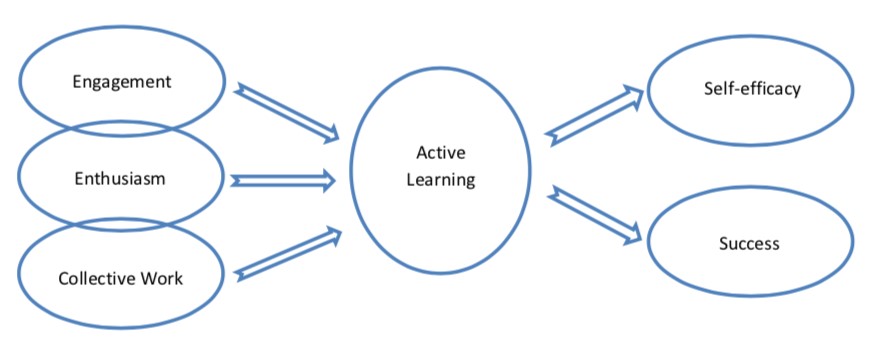
The EEC Model of Student Achievement
Using Engagement, Enthusiasm and Collective Work to Inspire Your Students to Rise to the Next Level
"To help someone succeed" is at the core of my work history, a factor in my subject happiness, and a main element in my teaching philosophy. Helping someone accomplish a goal, learn a new task, and develop self-efficacy is rewarding. I attribute this attitude to Trinity Services, Inc., the first organization I worked for after receiving my undergraduate degree. Trinity encouraged us daily to build strong relationships with our coworkers, work collectively to achieve our goals, and commit to a lifestyle of servant leadership.
More importantly, it was through this profession that I grew my passion for positive organizational psychology, teaching, and committed to pursuing a doctorate degree in hopes of helping others succeed. It is my mission to provide the highest quality teaching and supports to students so that they may flourish and live accomplished lives. I base my teaching and mentoring on three key concepts: creating engagement, instilling the enthusiasm I have for success and drive for achievement into my students, and encouraging students to work collectively to reach higher levels of success.
Engagement
An area of my teaching philosophy involves student engagement. I believe it is important to encourage students to be actively engaged in class discussions. I positively reinforce students for the questions they ask and the examples of personal situations they provide. The questions and the discussions stimulate other students in the class to engage in discussions with their own questions and examples. I also want students to feel comfortable if they do not have an answer or provide an incorrect answer. I strive to have my classroom setting be relaxed and one that promotes confidence in risk-taking in class contributions. The positive reinforcement and classroom ambiance are motivational strategies that greatly assist in the students’ learning and engagement.
I try to increase student’s learning and engagement inside the classroom by using various teaching methods, encouraging their use of a multiplicity of cognitive skills. The more ways students process material, the more likely they will be able to apply, analyze, synthesize, and evaluate the information. My experience as both a student and professor convinces me that using different teaching techniques is the best way to develop these abilities. I also believe that using a variety of teaching strategies keeps all students, regardless of their learning preferences, engaged in the classroom. Some teaching methods and tools I use include: Tophat (a great online resource for posting and responding to discussion questions), blog posts (encouraging my students to write blog posts to synthesize their learning), and adult learning theory (having my students practice and apply theories in real-time).
Additionally, students become engaged in the classroom when they see the relevance of their learning to their lives. Field experimentation, use of media, and applied projects alongside lecture and discussion create relevance for students, especially undergraduates with limited psychological knowledge. It is important for students to experience psychology first hand and see how the material can be used to understand something about themselves, explain a situation they are in, describe why something happened the way it did, or predict what behavior might happen in the future. I feel this brings psychology alive and increases their motivation to learn new material.
Enthusiasm and Drive for Achievement
An enthusiastic environment also facilitates engagement. One way to develop my student’s enthusiasm in the learning process is to convey the enthusiasm I have for the subject matter. Enthusiasm is contagious, and by demonstrating the love I have for the field of psychology, I feel my students become more engaged and interested in psychology as well.
The relationship between instructors and students is a key to extraordinary teaching. The most effective and memorable professors from my past also served as mentors. Their office doors were always open, and they were more than happy to answer questions and have detailed discussions. By serving as a mentor, students are more motivated to learn because they perceive that someone cares about them and cares about their learning. I try to convey this by creating an environment characterized by knowledge of students as individuals, mutual respect, and enthusiasm for the material.
Collective Work
The last component of my teaching philosophy is collective work. I truly believe that students mature as individuals, teammates, and scholars when presented with opportunities for group work. Properly structured group projects in the classroom reinforce skills including the ability to plan and manage time, receive and give feedback, and discuss and explain. Moreover, group projects can help students accept diversity, create social relationships, and teach information, ideas, and concepts to each other.
Furthermore, collective work encourages students to become active learners. I have found that students learn a great deal more when they explain material to each other rather than listen to a lecture. Collective work also introduces more unpredictability in teaching, since groups may approach tasks and solve problems in novel, interesting ways. This is refreshing for instructors because we learn new ways of explaining content.
Overall Model
My overall model of teaching to best illustrate my philosophy is presented below:


